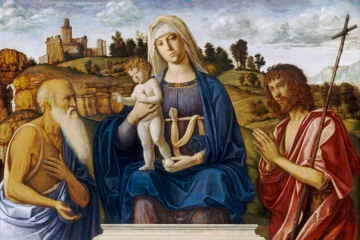Ashley Couto at JSTOR Daily:
 Although art historical writing had flourished since Giorgio Vasari’s Lives of the Artists, art consumers of the nineteenth century were particularly reliant on the expertise of the artists and art enthusiasts who published and became authorities on specific subjects. They needed guidance on what was best to buy.
Although art historical writing had flourished since Giorgio Vasari’s Lives of the Artists, art consumers of the nineteenth century were particularly reliant on the expertise of the artists and art enthusiasts who published and became authorities on specific subjects. They needed guidance on what was best to buy.
As Manfred J. Holler and Barbara Klose-Ullmann posit, the American taste for medieval and Renaissance art was bolstered, in part, by James Jackson Jarves. An American art critic based in Florence, Jarves enjoyed privileged access to works and documents from the Renaissance era. In his essay “A Lesson for Merchant Princes,” from Italian Rambles, published in 1883, Jarves encouraged Americans to follow in the footsteps of the fifteenth-century banker and prominent Florentine Giovanni Rucellai and invest their fortunes in art. In Rucellai’s eyes, there were three key reasons to become a patron: to honor God, to honor one’s city, and to secure one’s immortality by means of cultural legacy. These aspirations captivated a small sector of affluent Americans.
more here.
Enjoying the content on 3QD? Help keep us going by donating now.
